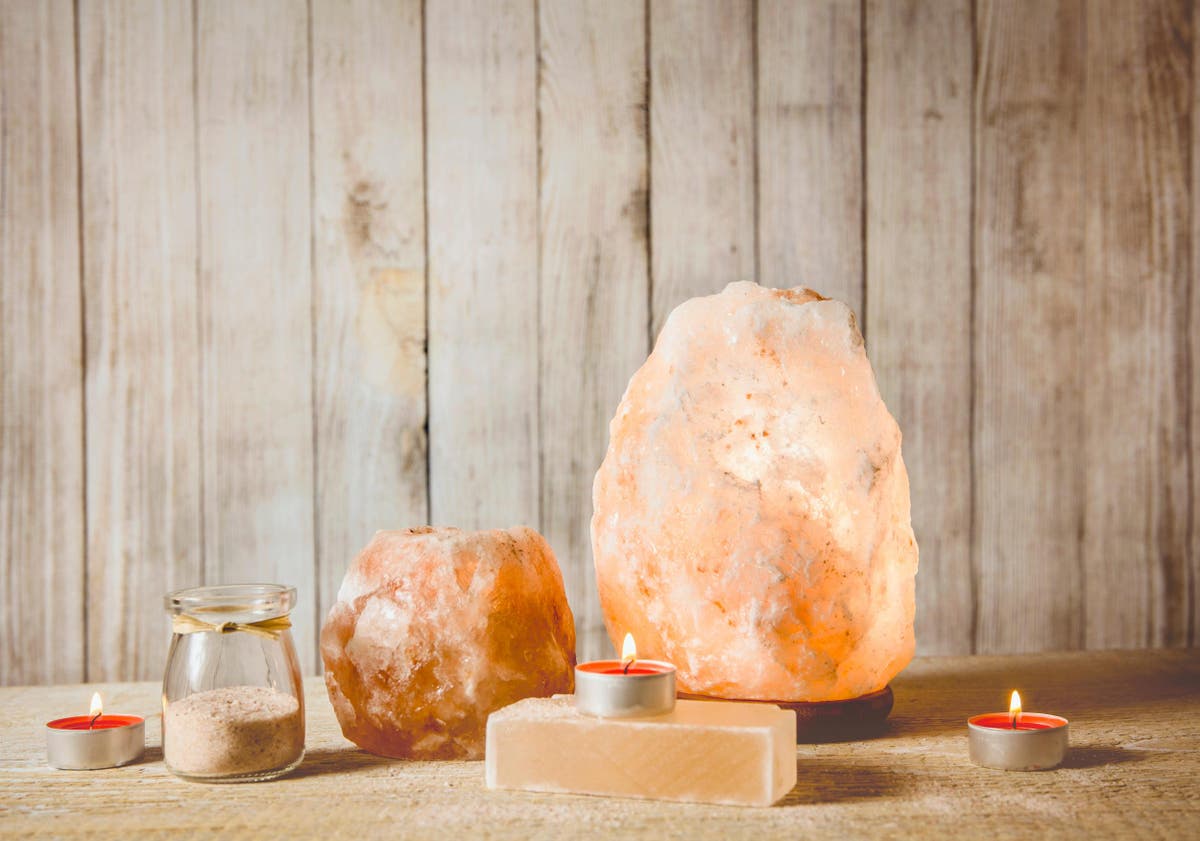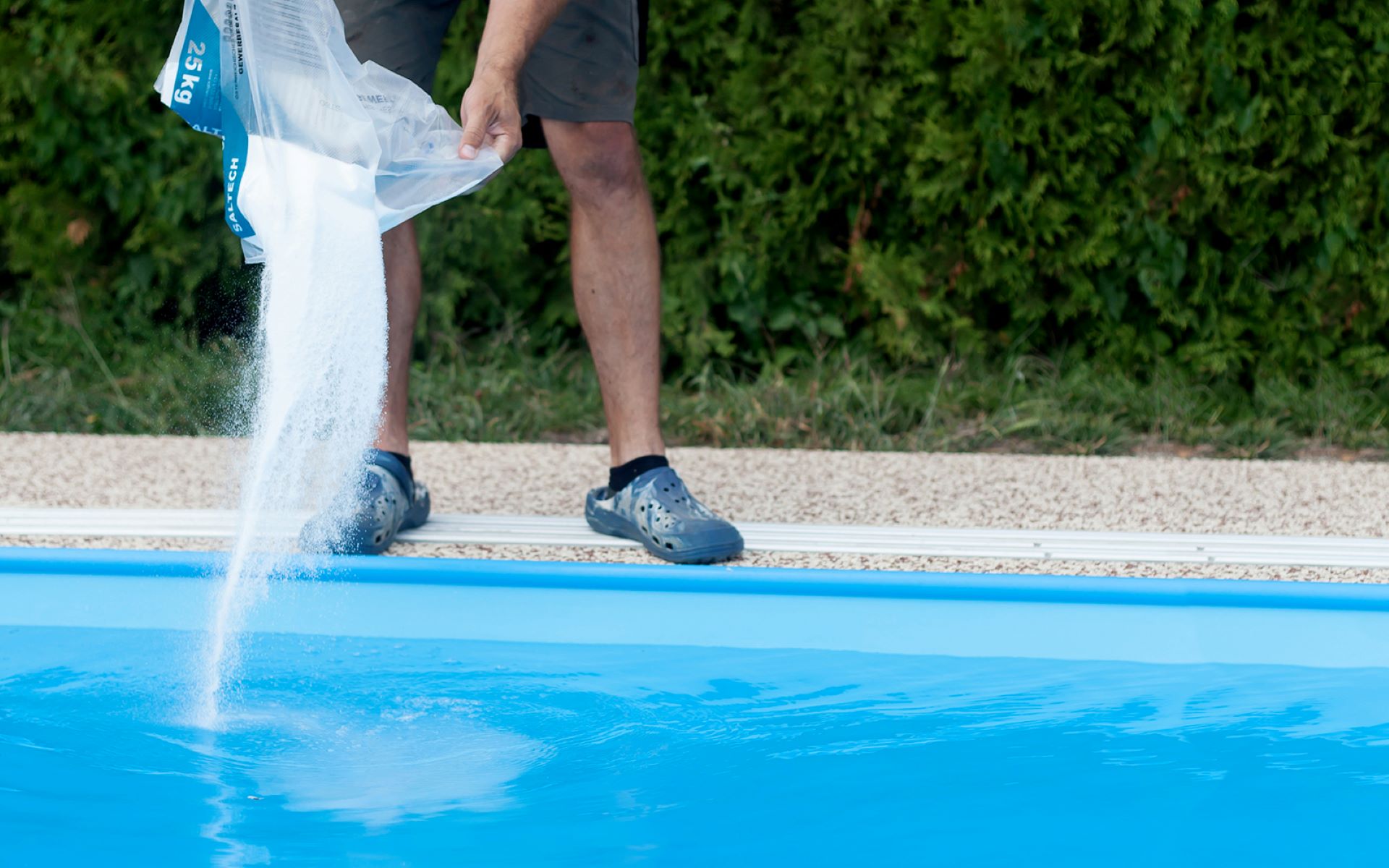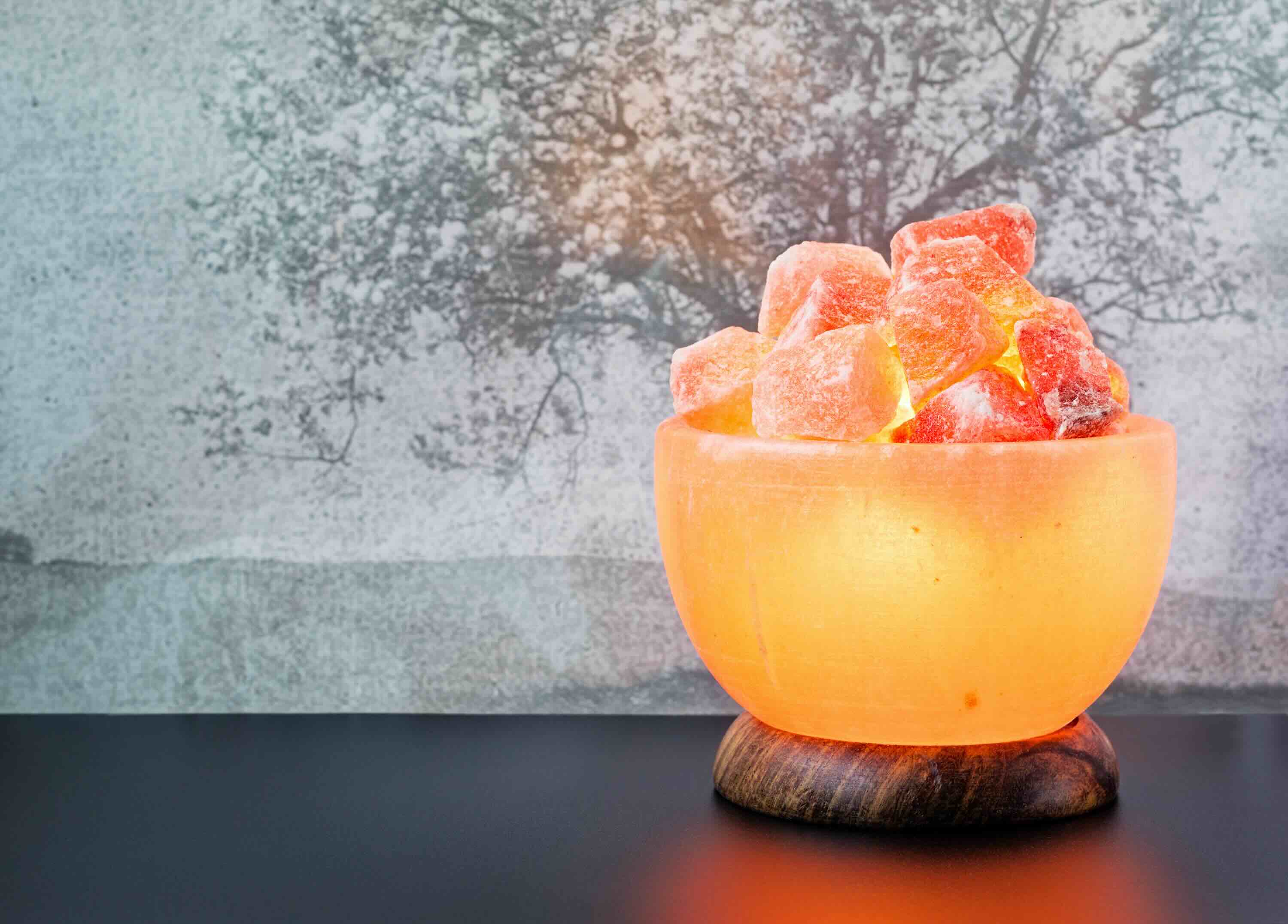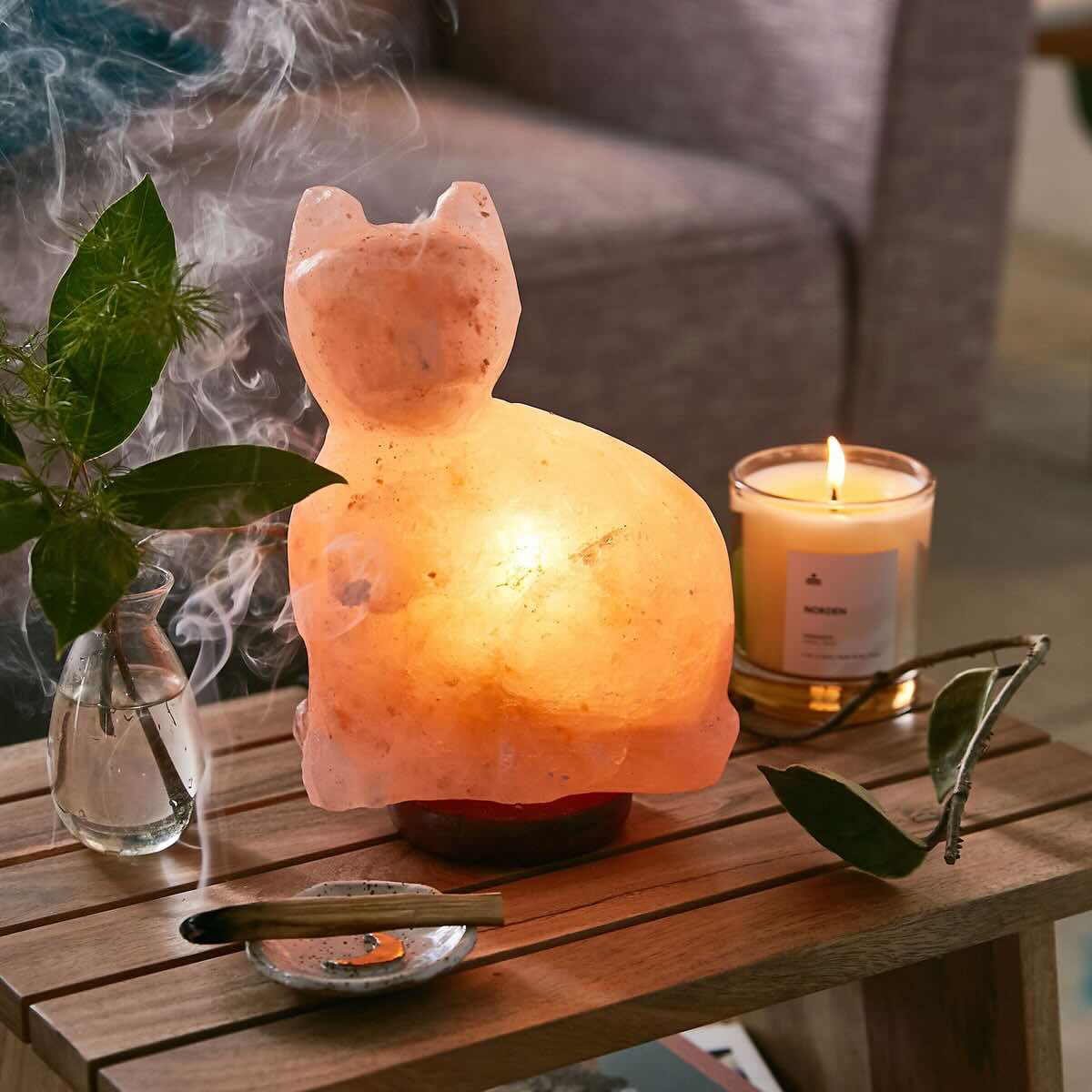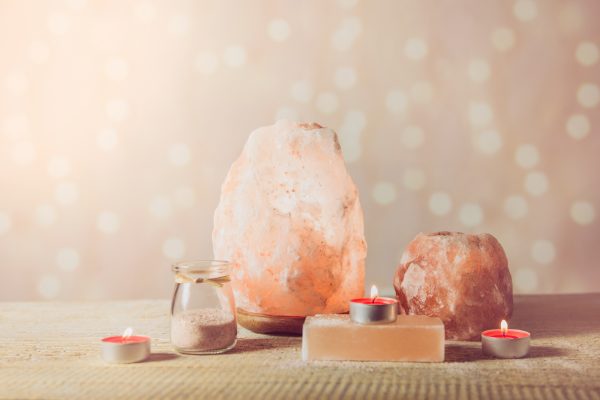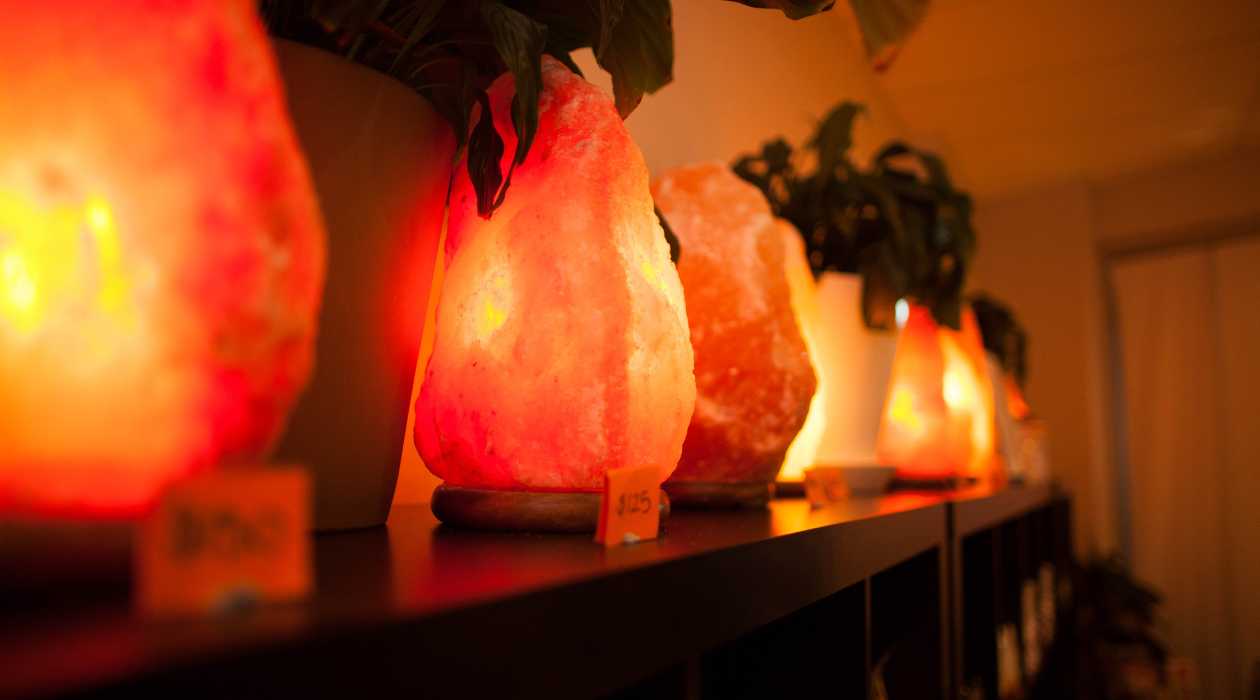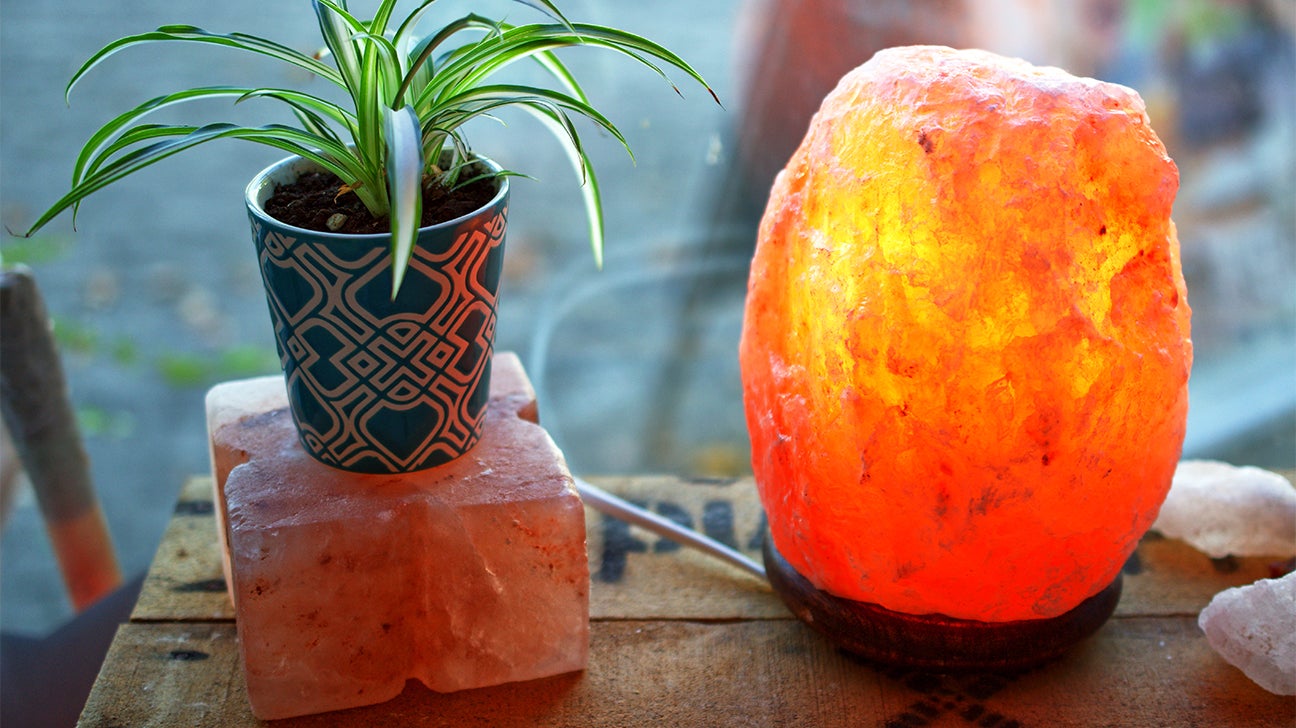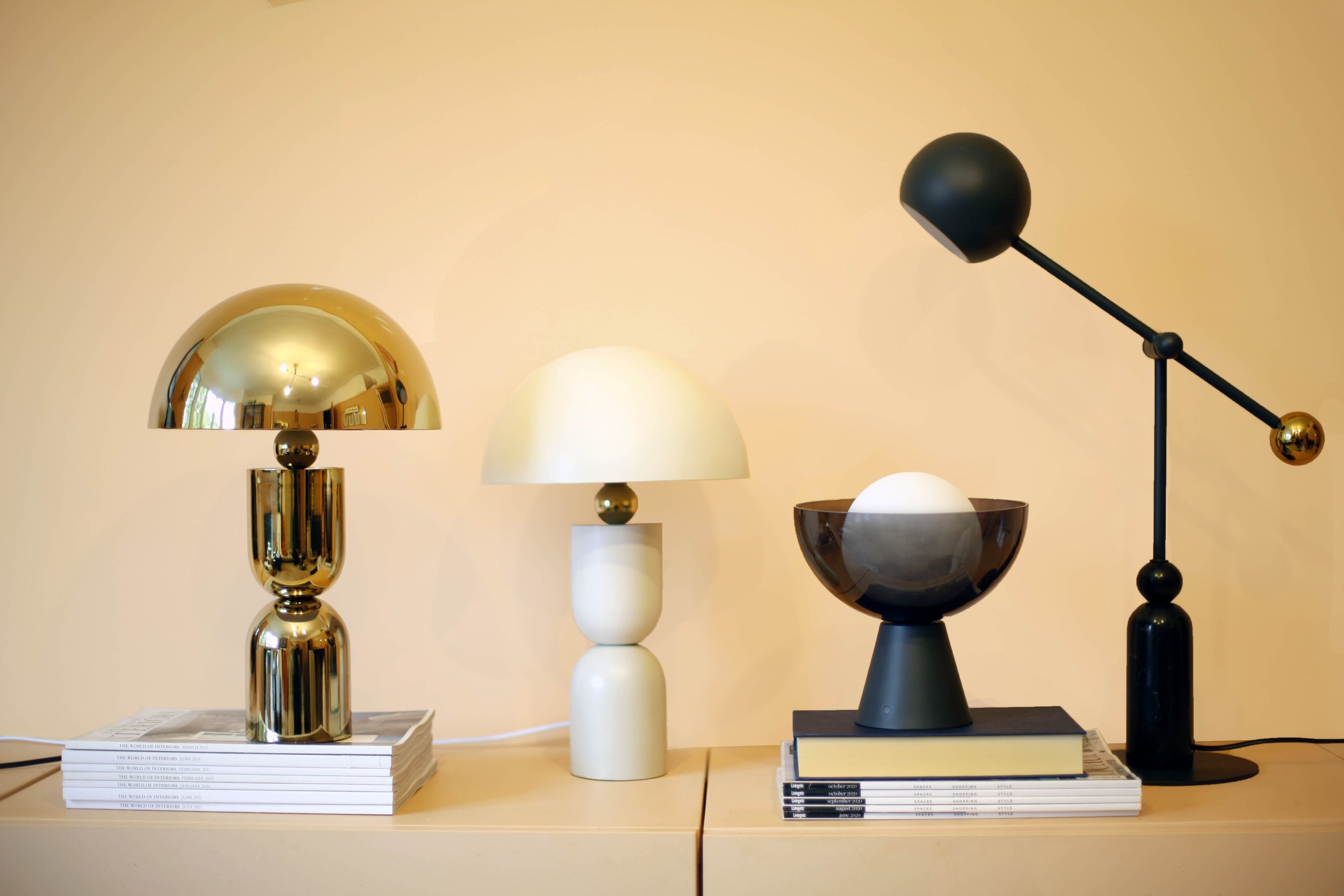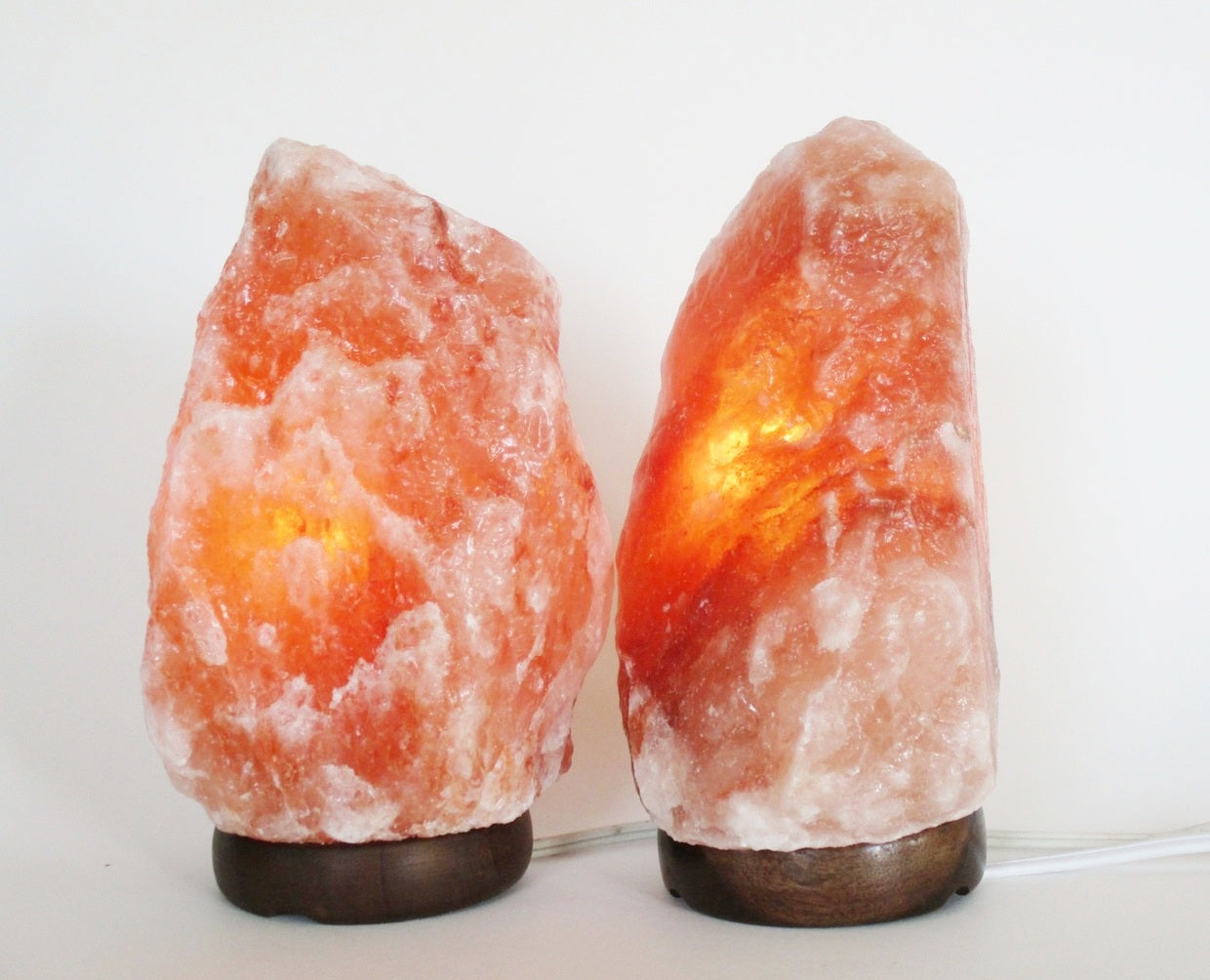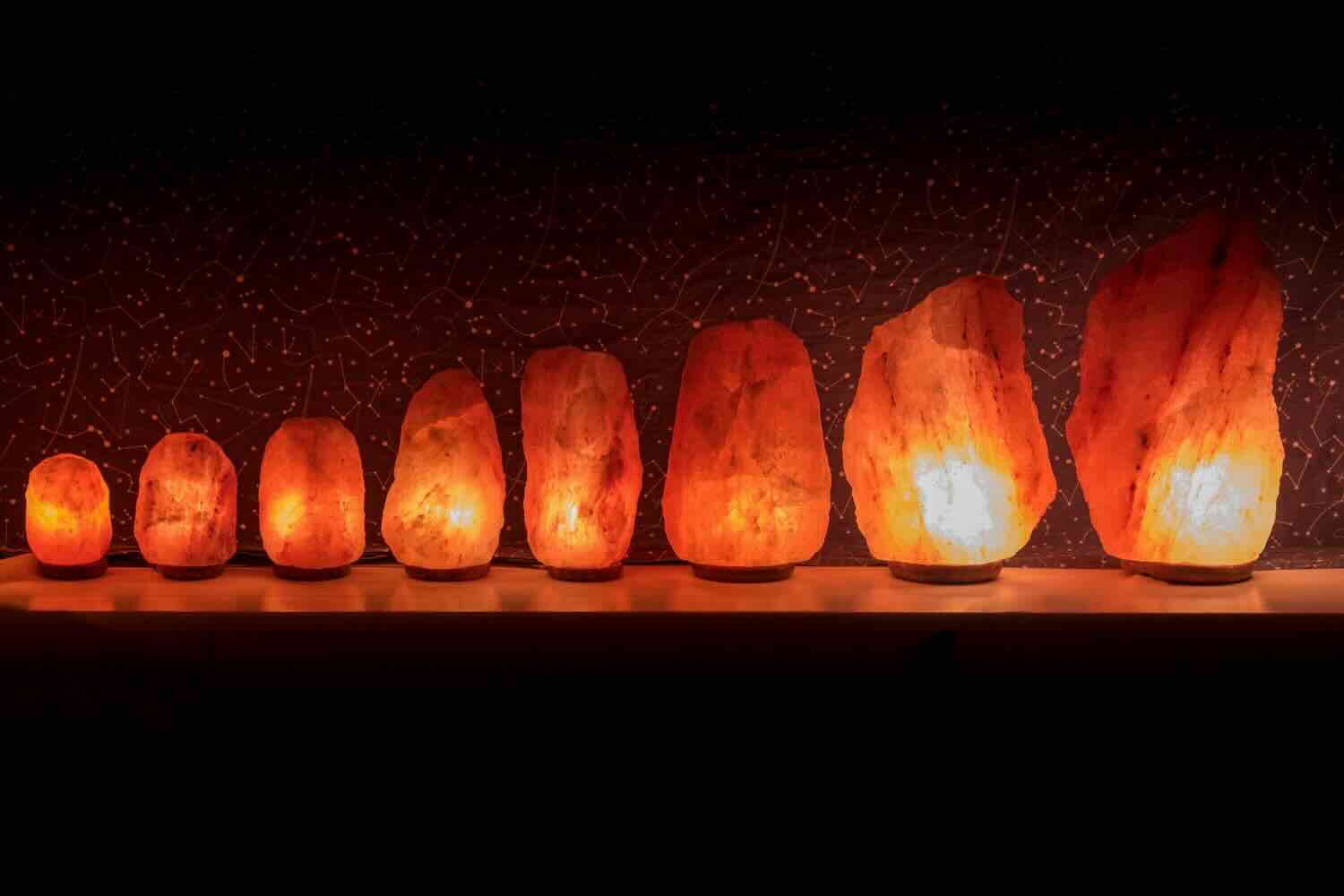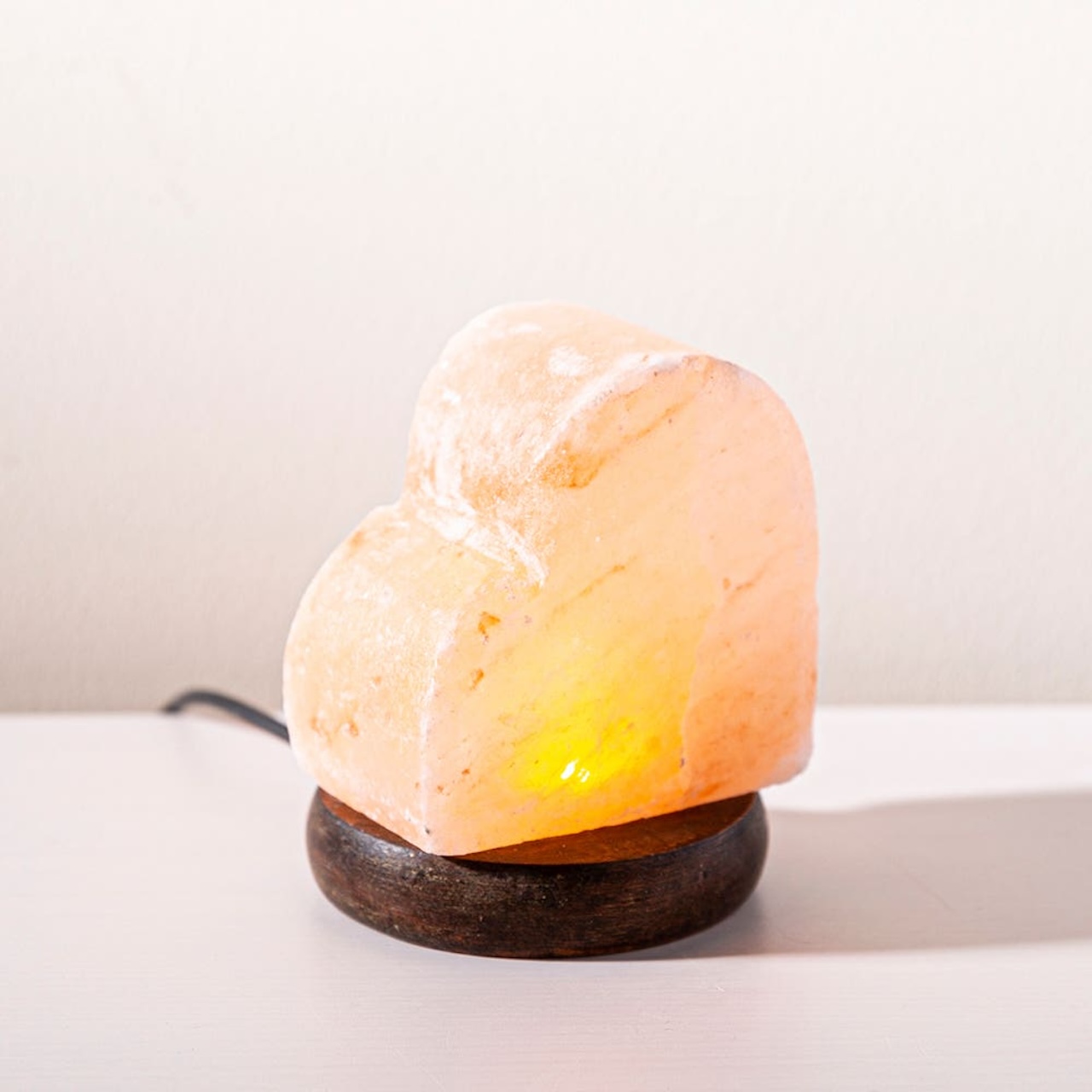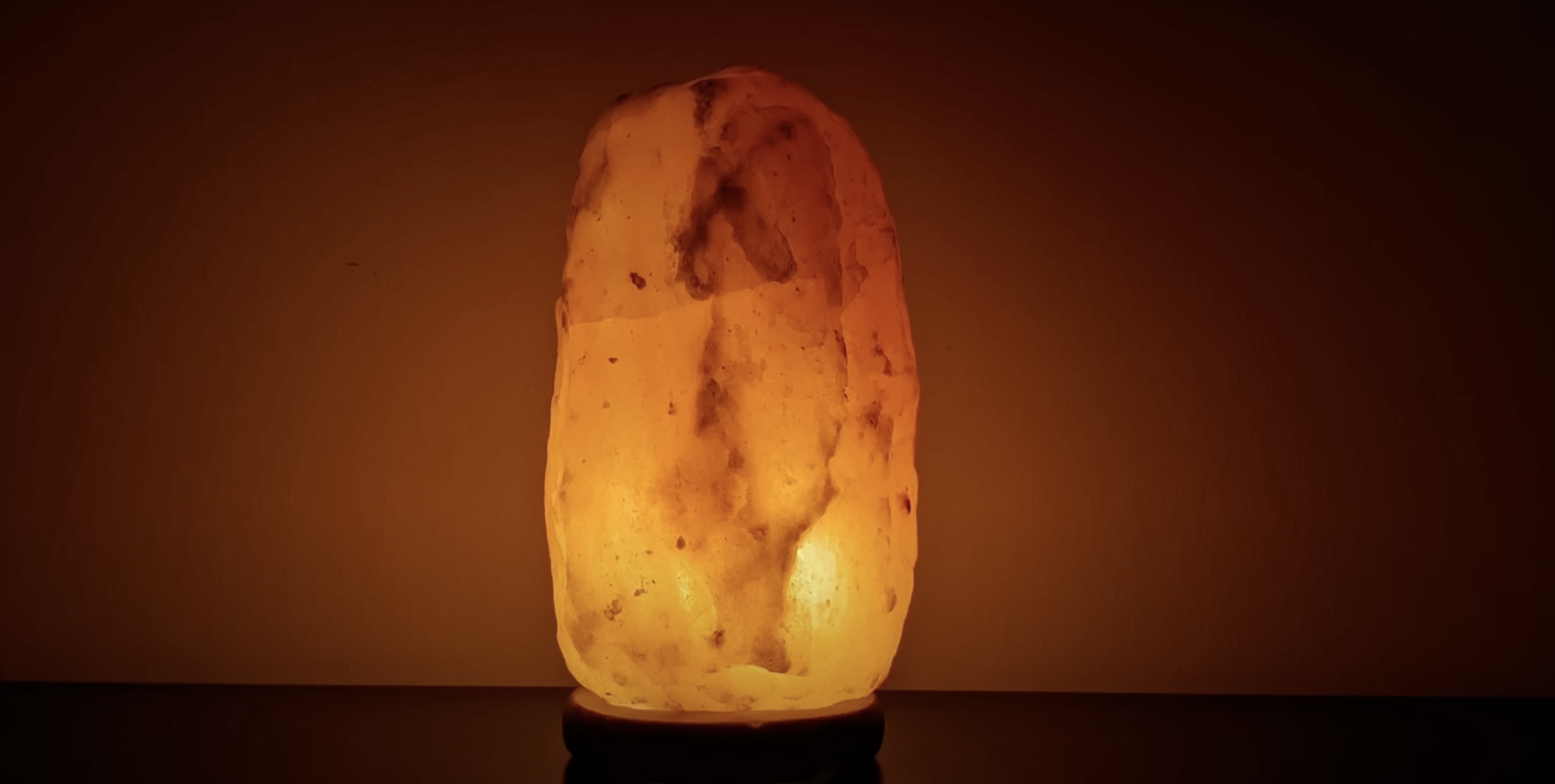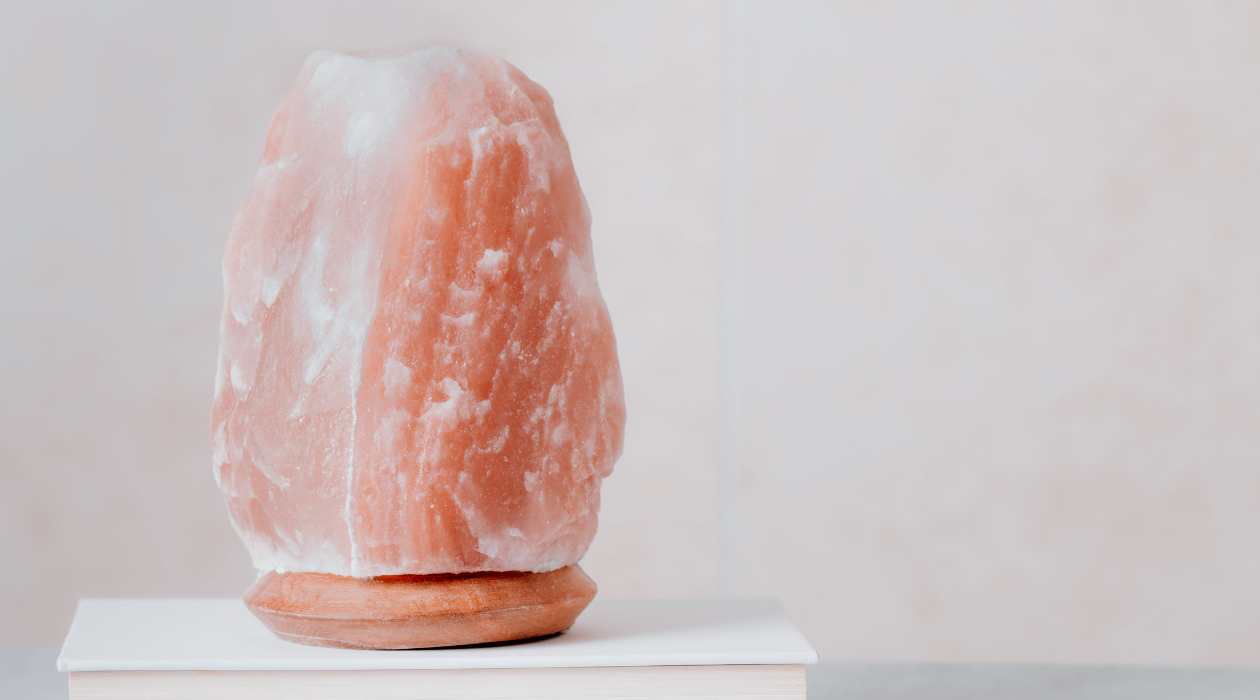

Furniture
What Kind Of Bulb For A Salt Lamp
Modified: February 24, 2024
Looking for the right bulb for your salt lamp? Discover our selection of furniture-friendly bulbs and create the perfect ambiance for your living space.
(Many of the links in this article redirect to a specific reviewed product. Your purchase of these products through affiliate links helps to generate commission for Storables.com, at no extra cost. Learn more)
Introduction
Welcome to the fascinating world of salt lamps! These beautiful and unique home decor items have gained immense popularity in recent years, not only for their aesthetic appeal but also for their reported health benefits. Salt lamps are made from solid blocks of salt crystals, primarily sourced from Himalayan salt mines, and are often used as natural air purifiers and mood enhancers.
While the soothing glow emitted by salt lamps creates a warm and inviting ambiance, it’s important to understand that the bulb inside the lamp plays a crucial role in both its functionality and visual appeal. Choosing the right bulb for your salt lamp is essential to ensure optimal performance and to prolong its lifespan.
In this article, we will discuss the different types of bulbs suitable for salt lamps and provide insights into wattage recommendations. Additionally, we will explore factors to consider when selecting the appropriate bulb for your specific needs.
Before diving into the details, it’s worth noting that salt lamps are available in various sizes and shapes, ranging from small bedside lamps to larger statement pieces. It’s essential to choose a bulb that is compatible with the specific lamp you own.
So, let’s shed some light on the importance of choosing the right bulb for your salt lamp.
Key Takeaways:
- Choose the right bulb for your salt lamp to enhance its beauty and create a soothing atmosphere. Consider factors like heat generation, wattage, and bulb type to optimize functionality and visual appeal.
- Avoid using certain bulbs like CFLs and high wattage bulbs to ensure the safety and effectiveness of your salt lamp. Stick to recommended bulbs for optimal performance and longevity.
Read more: How To Change A Salt Lamp Bulb
Understanding Salt Lamps
Salt lamps are not your ordinary table lamp. They are unique in their composition and offer more than just illumination. These lamps are crafted from blocks of natural salt crystals, most commonly from the Himalayan region, which is known for its pure and mineral-rich salt deposits.
The key component of salt lamps is the salt crystal itself. These crystals are formed over millions of years under extreme pressure and heat. The minerals present in the salt, such as iron, magnesium, potassium, and calcium, give the lamp its distinctive pink or orange hue.
When lit, salt lamps release negative ions into the air, which are believed to have various health benefits. Negative ions are molecules that have gained an extra electron, and they are often found in nature near waterfalls, beaches, and mountains.
The gentle glow emitted by salt lamps creates a calming and soothing ambience, making them an ideal choice for relaxation areas, bedrooms, and meditation spaces. Many people find the soft, warm light emitted by salt lamps to be comforting and conducive to a peaceful atmosphere.
Aside from their aesthetic appeal, salt lamps are also known for their potential air-purifying properties. It is believed that when the salt crystals are heated by the bulb inside the lamp, they attract moisture and certain pollutants, such as allergens and airborne particles. These impurities become trapped in the salt crystals, resulting in cleaner air within the immediate vicinity of the lamp.
Additionally, the salt crystals may help to neutralize electromagnetic radiation from electronic devices, by acting as a natural ionizer. This is particularly beneficial in today’s modern world, where we are surrounded by electronic devices such as smartphones, laptops, and televisions.
Overall, salt lamps offer a unique combination of visual appeal, potential health benefits, and a serene atmosphere. To fully enjoy these benefits, it is crucial to choose the right bulb that will enhance the appearance and functionality of your salt lamp.
Importance of Choosing the Right Bulb
When it comes to salt lamps, choosing the right bulb is of utmost importance. The bulb not only determines the brightness and visual appeal of the lamp but also affects its performance and longevity.
One key aspect to consider is the heat generated by the bulb. Salt lamps work by heating the salt crystals, which then release negative ions and attract impurities in the air. If the bulb produces too much heat, it can cause the salt to sweat excessively and may damage the lamp over time. On the other hand, if the bulb doesn’t generate enough heat, the salt crystal may not warm up sufficiently to release negative ions.
In addition to regulating heat, the bulb also controls the intensity of the light emitted by the salt lamp. Some individuals prefer a brighter light for reading or working, while others prefer a softer and more subdued glow for relaxation. Choosing a bulb with the appropriate wattage will allow you to achieve the desired lighting effect.
Another aspect to consider is the type of bulb used. Different types of bulbs, such as incandescent, LED, and halogen, have varying energy efficiency, lifespan, and environmental impact. By selecting the right bulb, you can ensure that your salt lamp operates efficiently and conserves energy.
Furthermore, choosing a high-quality bulb that is compatible with your salt lamp can contribute to its overall lifespan. A low-quality bulb may burn out quickly and require frequent replacements, while a well-made bulb can offer extended usage. This not only saves you money but also reduces waste and the environmental impact of constantly disposing of used bulbs.
Lastly, the choice of bulb can also affect the aesthetic appeal of your salt lamp. The color temperature and brightness of the bulb can enhance or diminish the natural beauty of the salt crystals. It’s important to choose a bulb that complements the lamp’s design and brings out the unique texture and colors of the salt.
Considering all these aspects, it becomes clear that choosing the right bulb for your salt lamp is essential for optimal functionality, desired lighting effects, energy efficiency, lifespan, and overall visual appeal. So, let’s delve into the factors to consider when selecting the appropriate bulb for your salt lamp.
Factors to Consider
When selecting the right bulb for your salt lamp, there are several important factors to consider. Taking these factors into account will help you make an informed decision and ensure that your salt lamp operates efficiently and effectively.
1. Heat Generation: Salt lamps require a bulb that generates enough heat to warm the salt crystals and release negative ions. However, it is crucial to avoid bulbs that generate excessive heat, as this can cause the salt to sweat excessively and damage the lamp. Look for bulbs that provide a good balance of heat output.
2. Wattage: The wattage of the bulb determines the brightness of the light emitted by the salt lamp. Consider the purpose of your salt lamp and the desired lighting effect. If you intend to use the lamp for ambiance and relaxation, a lower wattage bulb may be preferred. However, if you need brighter light for reading or working, a higher wattage bulb may be more suitable.
3. Bulb Type: There are several types of bulbs to choose from, including incandescent, LED, and halogen. Each type has its own advantages and considerations. Incandescent bulbs produce a warm and soft glow but are less energy-efficient. LED bulbs are energy-efficient and have a longer lifespan, but their light may be cooler in color. Halogen bulbs offer a bright and focused light but may generate more heat. Consider your priorities in terms of energy efficiency, lifespan, and lighting preferences when selecting the bulb type.
4. Compatibility: Ensure that the bulb you choose is compatible with the socket or fitting of your salt lamp. Check the specifications of your lamp and look for bulbs that are recommended for use with that specific type of socket or fitting.
5. Quality and Durability: Opt for high-quality bulbs from reputable manufacturers. A well-made bulb is likely to have a longer lifespan and better performance, reducing the need for frequent replacements. Look for bulbs that are energy-efficient and meet relevant safety standards.
6. Environmental Impact: Consider the environmental impact of the bulb, especially in terms of energy consumption and material composition. LED bulbs are known for their energy efficiency and long lifespan, making them a more eco-friendly choice. Additionally, look for bulbs that are recyclable or disposed of properly to minimize their environmental footprint.
By taking these factors into account, you can make an informed decision when choosing the right bulb for your salt lamp. This will ensure that your salt lamp operates optimally, provides the desired lighting effects, and aligns with your energy efficiency and environmental considerations.
Types of Bulbs Suitable for Salt Lamps
When it comes to choosing the right bulb for your salt lamp, there are several types of bulbs that are suitable for use. Each type has its own characteristics and considerations, allowing you to find the perfect bulb to suit your needs.
1. Incandescent Bulbs: Incandescent bulbs have been a popular choice for salt lamps due to their warm and soft glow. These bulbs work by heating a filament inside the bulb, which produces light. Incandescent bulbs are known for creating a cozy and soothing ambiance, perfect for relaxation and creating an inviting atmosphere. However, they are less energy-efficient compared to other bulb types and have a shorter lifespan.
2. LED Bulbs: LED (Light Emitting Diode) bulbs have gained significant popularity in recent years, thanks to their energy efficiency and long lifespan. LED bulbs consume less energy compared to incandescent bulbs, which makes them an environmentally friendly choice. They also produce very little heat, reducing the risk of overheating or sweating the salt crystals in the lamp. LED bulbs are available in a wide range of color temperatures and can provide a crisp or warm light depending on your preference.
3. Halogen Bulbs: Halogen bulbs are another option suitable for salt lamps. These bulbs produce a bright, focused light and are known for their color rendition, making them ideal for showcasing the unique texture and color of salt crystals. Halogen bulbs are more energy-efficient than incandescent bulbs but generate more heat. It’s important to consider the heat output and ensure proper ventilation when using halogen bulbs in salt lamps.
When selecting the type of bulb for your salt lamp, consider your personal preferences for lighting effects, energy efficiency, and ambiance. LED bulbs are a popular choice due to their energy efficiency and versatility in light temperatures. Incandescent bulbs are favored for their warm and cozy glow. Halogen bulbs offer a focused and bright light, perfect for accentuating the beauty of salt crystals.
Ultimately, the type of bulb you choose should align with your desired ambiance, energy efficiency goals, and personal preferences. It’s important to keep in mind the heat generated by the bulb and ensure it is compatible with the size and design of your salt lamp.
Now that we have explored the different types of bulbs suitable for salt lamps, let’s move on to wattage recommendations to help you further optimize your salt lamp experience.
Read also: 15 Best Salt Lamp Bulbs for 2024
Incandescent Bulbs
Incandescent bulbs have long been a popular choice for salt lamps due to their soft and warm glow. These bulbs work by passing an electric current through a filament, which then heats up and produces light. Incandescent bulbs offer a cozy and soothing ambiance, making them an excellent option for creating a relaxing and inviting atmosphere in your space.
One of the advantages of using incandescent bulbs in salt lamps is their ability to enhance the natural beauty of the salt crystals. The warm glow emitted by these bulbs complements the unique texture and colors of the salt, creating a visually appealing display. This can make your salt lamp a centerpiece in any room and a conversation starter among guests.
However, it’s worth noting that incandescent bulbs are not as energy-efficient as other types of bulbs. They convert a significant amount of electricity into heat, which can lead to higher energy consumption. This factor should be considered if you plan to use your salt lamp for extended periods or want to minimize energy usage.
Another drawback of incandescent bulbs is their relatively shorter lifespan compared to other bulb types. Their filaments tend to burn out more quickly, requiring more frequent replacements. This can be inconvenient and result in additional costs over time. If you choose to use incandescent bulbs in your salt lamp, consider keeping spare bulbs on hand for easy replacement when needed.
When selecting incandescent bulbs for your salt lamp, be sure to choose the appropriate wattage. Lower wattage bulbs, such as 15-25 watts, are commonly used for smaller salt lamps or when a more subtle and ambient lighting effect is desired. Higher wattage bulbs, such as 40-60 watts, can be suitable for larger salt lamps or when a brighter light is desired for reading or working.
It’s important to note that regardless of the wattage, it’s recommended to monitor the heat generated by the incandescent bulb. Salt lamps are sensitive to excessive heat, which can cause the salt crystals to excessively sweat or even damage the lamp over time. Make sure there is proper ventilation and avoid using bulbs with wattages that generate excessive heat for your specific salt lamp.
In summary, incandescent bulbs are a popular choice for salt lamps due to their warm and cozy glow that enhances the natural beauty of salt crystals. While they may not be as energy-efficient as other bulb types and have a shorter lifespan, they can create a cozy and inviting atmosphere in your space. Consider the appropriate wattage and monitor heat generation when using incandescent bulbs in your salt lamp to ensure optimal performance and longevity.
When choosing a bulb for a salt lamp, opt for a small, low-wattage bulb such as a 15-watt incandescent bulb or a 5-watt LED bulb to avoid overheating the salt.
LED Bulbs
LED (Light Emitting Diode) bulbs have become increasingly popular for use in salt lamps due to their energy efficiency and long lifespan. LED technology has revolutionized the lighting industry, offering numerous benefits over traditional incandescent bulbs.
One of the primary advantages of LED bulbs is their energy efficiency. LED bulbs consume significantly less energy compared to incandescent bulbs, making them a more environmentally friendly choice. This reduced energy consumption not only helps to lower your electricity bills but also contributes to a greener and more sustainable lifestyle.
In addition to their energy efficiency, LED bulbs also have an exceptionally long lifespan. They can last for thousands of hours, significantly longer than incandescent bulbs. This extended lifespan reduces the frequency of bulb replacements, saving you time and money in the long run.
LED bulbs are known for their versatility in light temperatures. They are available in a range of options, including warm white, cool white, and daylight. This allows you to customize the lighting effect of your salt lamp to suit your preferences and the desired ambiance in your space. Whether you prefer a cozy and soothing glow or a crisp and bright light, LED bulbs can deliver the perfect lighting experience.
Another advantage of using LED bulbs in salt lamps is their cool operating temperature. Unlike incandescent bulbs that generate a significant amount of heat, LED bulbs produce very little heat. This eliminates the risk of overheating the salt crystals and helps maintain the integrity of your salt lamp over time. The lower heat output also reduces the risk of sweating or melting the salt, ensuring the longevity of your salt lamp.
LED bulbs are available in various wattages to suit different salt lamp sizes and desired lighting effects. For smaller salt lamps or a subtle and ambient glow, lower wattage LED bulbs, such as 5-10 watts, can be sufficient. If you have a larger salt lamp or need brighter lighting for reading or working, higher wattage LED bulbs, such as 15-25 watts, may be more suitable.
When purchasing LED bulbs for your salt lamp, ensure that you choose bulbs that are compatible with the socket or fitting of your lamp. LED bulbs come in different shapes and sizes, so it’s important to select the right one that fits securely in your salt lamp.
In summary, LED bulbs offer significant advantages over traditional incandescent bulbs when it comes to using them in salt lamps. Their energy efficiency, long lifespan, versatility in light temperatures, and cool operating temperature make them an excellent choice. Consider the appropriate wattage and ensure compatibility when selecting LED bulbs for your salt lamp to enjoy the perfect combination of energy efficiency, longevity, and customized lighting effects.
Halogen Bulbs
Halogen bulbs are another type of bulb that can be suitable for use in salt lamps. Known for their bright and focused light, halogen bulbs offer unique characteristics that make them a popular choice for specific lighting requirements.
One of the key advantages of halogen bulbs is their excellent color rendition. These bulbs provide a crisp and natural light that closely resembles daylight. This makes them ideal for highlighting the unique texture and colors of salt crystals, allowing you to showcase the beautiful aesthetics of your salt lamp.
Halogen bulbs are also capable of producing brighter light compared to other bulb types, making them a suitable choice when you need illumination for specific tasks or want to create a vibrant ambiance in your space. The focused light emitted by halogen bulbs can provide a concentrated beam of light, which can be useful for reading, working, or creating a specific focal point in a room.
It is important to note, however, that halogen bulbs do generate more heat compared to LED or incandescent bulbs. The increased heat output can affect the salt crystals in the lamp and potentially lead to sweating or melting. It is crucial to choose the appropriate wattage and ensure proper ventilation when using halogen bulbs in salt lamps to prevent overheating and potential damage to the lamp.
When selecting halogen bulbs for your salt lamp, consider the wattage that suits your specific needs. Lower wattage halogen bulbs, such as 10-20 watts, can provide a softer and more ambient glow, while higher wattage bulbs, around 35-50 watts, can deliver a brighter and more intense light. It is important to find the right balance between the desired level of brightness and the heat generated by the bulb.
Another factor to consider when using halogen bulbs is their lifespan. While halogen bulbs may have a longer lifespan compared to traditional incandescent bulbs, they generally have a shorter lifespan than LED bulbs. However, the convenience of finding halogen bulb replacements in local stores and their relatively lower cost compared to LED bulbs can be beneficial considerations.
Overall, halogen bulbs offer a unique lighting experience with their bright and focused light, making them suitable for specific lighting needs and for showcasing the beauty of salt lamps. When using halogen bulbs in salt lamps, ensure proper wattage, ventilation, and monitor the heat generated to protect the integrity of the lamp and enjoy the desired lighting effects.
Wattage Recommendations
When it comes to wattage recommendations for salt lamps, there is no one-size-fits-all answer. The appropriate wattage will depend on several factors, including the size of your salt lamp, the desired brightness of the light, and personal preference.
For smaller salt lamps or when you want a more subtle and ambient lighting effect, lower wattage bulbs are generally recommended. Bulbs in the range of 5-10 watts can provide a soft and gentle glow, creating a cozy and relaxing atmosphere in your space. This lower wattage is often sufficient to release negative ions and enjoy the potential health benefits offered by salt lamps.
On the other hand, if you have a larger salt lamp or require brighter lighting for reading or working, higher wattage bulbs may be more suitable. Bulbs in the range of 15-25 watts can provide a brighter and more intense light, allowing for better visibility and illumination in your space. However, be cautious not to exceed the recommended wattage for your particular salt lamp, as excessive heat can be detrimental to the lamp and may compromise its performance or lifespan.
It’s essential to consider the heat generated by the bulb when choosing the wattage for your salt lamp. Salt lamps are sensitive to heat, and excessive heat can cause the salt crystals to sweat excessively, leading to potential damage to the lamp. Ensure that there is proper ventilation and monitor the lamp regularly when using higher wattage bulbs to prevent overheating.
Keep in mind that different bulb types may have varying heat outputs, even at the same wattage. LED bulbs, for example, produce significantly less heat compared to incandescent or halogen bulbs. This can be an important consideration when selecting the appropriate wattage for your salt lamp.
Ultimately, it’s crucial to find the right balance between the desired brightness and the heat generated by the bulb. Consider the size and design of your salt lamp, the intended purpose of the light, and your personal preferences for ambiance when determining the appropriate wattage.
Lastly, always consult the manufacturer’s recommendations or guidelines provided with your salt lamp to ensure you are within the recommended wattage range. This will help you make an informed decision and ensure the optimal performance and longevity of your salt lamp.
By considering these factors and wattage recommendations, you can select the right bulb and wattage that best suits your specific salt lamp and lighting requirements.
Read more: What Does A Salt Lamp Do
Avoiding Certain Bulbs
When it comes to selecting the right bulb for your salt lamp, it’s important to be aware of certain types of bulbs that are not suitable for use. Avoiding these bulbs will help ensure the safety and effectiveness of your salt lamp.
1. Compact Fluorescent Bulbs (CFLs): CFL bulbs are energy-efficient and commonly used in many households. However, they are not recommended for use in salt lamps. CFL bulbs generate a significant amount of heat and can cause the salt crystals to sweat excessively, potentially damaging the lamp. Additionally, the flickering of CFL bulbs can be detrimental to the ambiance of the salt lamp, which is known for its soothing and steady glow.
2. High Wattage Bulbs: Using bulbs with wattages higher than the manufacturer’s recommendations or those that generate excessive heat should be avoided. High wattage bulbs can overheat the salt lamp, causing the salt crystals to melt, sweat excessively, or even lead to the risk of fire hazards. Always follow the suggested wattage guidelines provided by the manufacturer to ensure the safe and proper functioning of your salt lamp.
3. Energy-Saving Spiral Bulbs: While energy-saving spiral bulbs may seem like an eco-friendly choice, they are not suitable for use in salt lamps. These bulbs can generate excessive heat due to their compact design, leading to the risk of overheating and potential damage to the lamp. Stick to bulbs specifically recommended for salt lamps to ensure optimal performance and safety.
4. Non-Dimmable Bulbs: If you have a salt lamp with a dimmer switch or intend to use a dimmer to adjust the brightness, make sure you choose bulbs specifically marked as dimmable. Non-dimmable bulbs may not be compatible with dimmer switches, and using them in conjunction with a dimmer can lead to flickering or reduced lifespan of the bulb.
5. Specialty Bulbs: Salt lamps are designed to work best with standard bulbs, such as incandescent, LED, or halogen bulbs. Avoid using specialty bulbs, such as colored bulbs or those with unconventional designs. Specialty bulbs may not fit properly or generate an inappropriate amount of heat, compromising the functionality and aesthetics of your salt lamp.
6. Overly Bright or Harsh Bulbs: It’s important to strike the right balance between the brightness of the bulb and the intended purpose of the lighting. Avoid using bulbs that are excessively bright or emit harsh, cool-toned light if you are aiming for a soft and cozy atmosphere. Choose bulbs with color temperatures that create a warm and inviting ambiance.
By avoiding these types of bulbs and selecting bulbs that are recommended for salt lamps, you can ensure the safety, effectiveness, and longevity of your salt lamp. Always refer to the manufacturer’s guidelines and specifications when choosing the appropriate bulb for your specific salt lamp model.
Conclusion
Choosing the right bulb for your salt lamp is essential to maximize its functionality, aesthetic appeal, and overall performance. Whether you opt for incandescent bulbs, LED bulbs, or halogen bulbs, each type has its advantages and considerations.
Incandescent bulbs offer a warm and cozy glow that enhances the natural beauty of salt crystals. However, they are less energy-efficient and have a shorter lifespan compared to other bulb types.
LED bulbs, on the other hand, are highly energy-efficient, have a long lifespan, and offer versatility in light temperatures. They are a popular choice for their environmental benefits and customizable lighting effects.
Halogen bulbs provide a bright and focused light that is ideal for showcasing the unique texture and colors of salt crystals. However, they generate more heat and require careful consideration to prevent overheating the salt lamp.
When choosing the appropriate wattage for your salt lamp, consider factors such as the size of the lamp, desired brightness, and heat generation. Lower wattage bulbs are suitable for a more subtle and ambient glow, while higher wattage bulbs provide brighter light for specific tasks or larger salt lamps.
Avoid certain types of bulbs, such as CFLs or high wattage bulbs, that can generate excessive heat and potentially damage your salt lamp. Stick to bulbs specifically recommended for salt lamps and follow the manufacturer’s guidelines for safe and optimal use.
In conclusion, the right bulb for your salt lamp can enhance the ambiance, air-purifying properties, and visual appeal of these unique home decor items. Consider your preferences for lighting effects, energy efficiency, and the specific requirements of your salt lamp when making your selection. By choosing the appropriate bulb and wattage, you can create a soothing, inviting atmosphere while enjoying the potential health benefits of your salt lamp.
So, go ahead and illuminate your space with a salt lamp, knowing that you have made an informed decision about the bulb that will enhance its beauty and create a warm, relaxing environment.
Frequently Asked Questions about What Kind Of Bulb For A Salt Lamp
Was this page helpful?
At Storables.com, we guarantee accurate and reliable information. Our content, validated by Expert Board Contributors, is crafted following stringent Editorial Policies. We're committed to providing you with well-researched, expert-backed insights for all your informational needs.
